 The FBI stretches its jurisdiction all the way to Morocco in 1953 thriller. 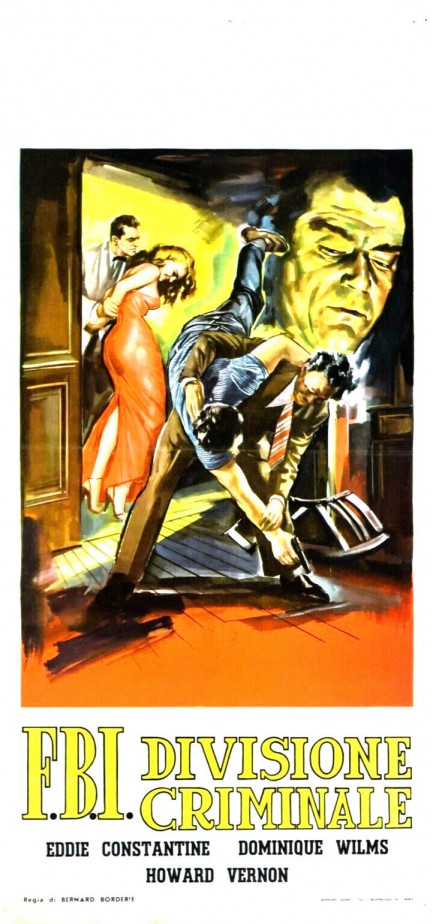 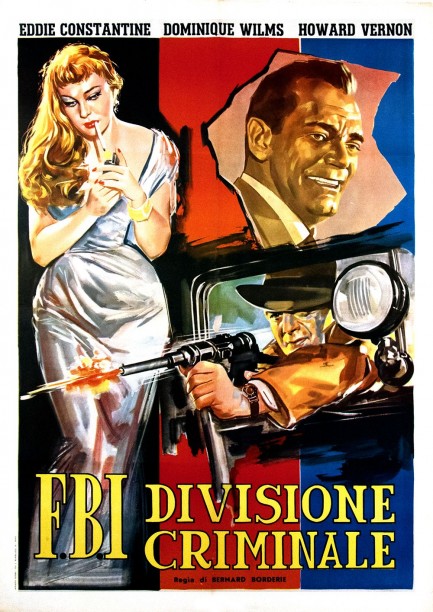
Above, two beautiful Italian posters for F.B.I. divisione criminale, originally titled La môme vert de gris, but known in the U.S. as Poison Ivy. The film was based on a Peter Cheyney novel also named Poison Ivy, and starred Eddie Constantine as an American G-man in Morocco, and Dominique Wilms as a femme fatale known as—you guessed it—Poison Ivy. We talked about the movie at length in May, so if you're curious have a look here.
 French crime drama throws Caution to the wind. 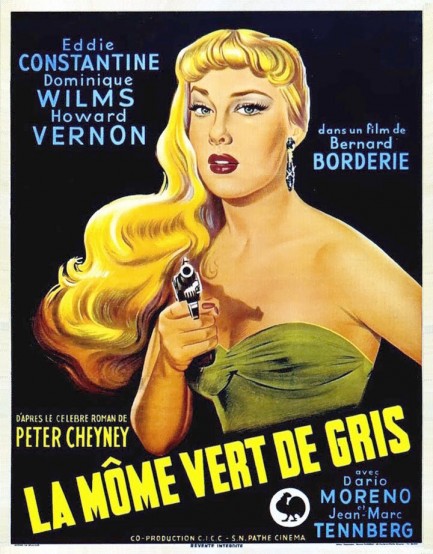 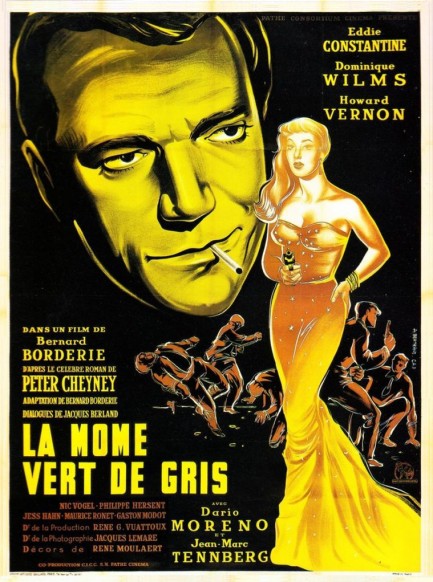
Here you see two posters for the 1953 French crime drama La môme vert de gris, which was called Poison Ivy in the U.S. This was adapted from a 1937 novel by Peter Cheyney that featured his recurring character FBI agent Lemmy Caution, who onscreen is played by Eddie Constantine. When two million dollars worth of gold goes missing Constantine is sent to Casablanca to determine its disposition and identify all malefactors involved. He finds himself pitted against a criminal mastermind of sorts, and a hive of henchmen that occupy a nightclub, a yacht, and a hideout in Casablanca's old quarter. Constantine deals with all comers by applying the time-honored advice: when in doubt, punch them out.
Film buffs the world over associate Casablanca with the Humphrey Bogart film of the same name, but the city you see here is different from the one made famous by Bogart and Co. ten years earlier. The Casablanca of this film is a maze of L.A.-style roads, white skyscrapers, and an industrial port the size of Long Beach. We checked population figures and learned it was already a major city of more than 500,000 people during the early 1940s, which means that Casablanca's village feel is really just a clever cinematic fantasy. Poison Ivy's Casablanca is real, and the many location shots mixed into the movie prove it.
That's Dominique Wilms on the top poster, and she's the reason we watched the movie. In this, her cinematic debut, she plays a femme fatale named Carlotta de la Rue, which of course indicates that she's a woman from the street. If that isn't enough to warn the men away, her friends call her Poison Ivy. Why? Because she burns. Hopefully that's meant figuratively, and above the waist. A character bringing so much heat must of course perform a torch song, which she sings with detachment, while the lyrics—as they usually do—indicate deeper issues: “I wander with my sorrow, along with my memories, looking for my old joys, which I've seen fade and die.” See? She just wants to be loved, assuming a man isn't thwarted by her acid tongue, that ironic right eyebrow, and the barbed wire encircling her heart.
The movie is certainly watchable, though it's nothing special aside from its exotic setting. But you have to appreciate the French love for U.S. crime fiction. In fact, director Bernard Borderie got the band back together and cast Constantine, Wilms, and her prehensile eyebrow in the next Caution movie, 1954's Les femmes s'en balancent. Constantine and Wilms also co-starred in 1957's Le grand bluff, another Caution adaptation, but helmed by Patrice Dally. Constantine went on to make Caution the signature character of his career. Wilms, who at age ninety is still out there somewhere, had about a dozen more roles before leaving cinema behind, but we think she had “it,” and will definitely check out some of her other work. 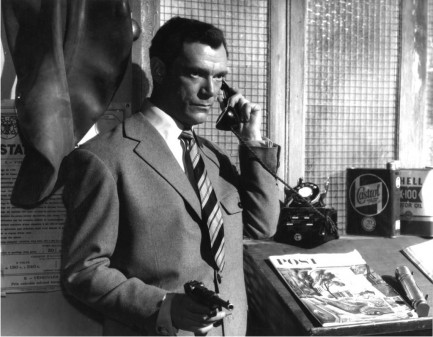 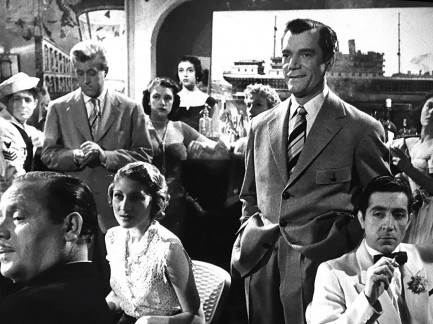 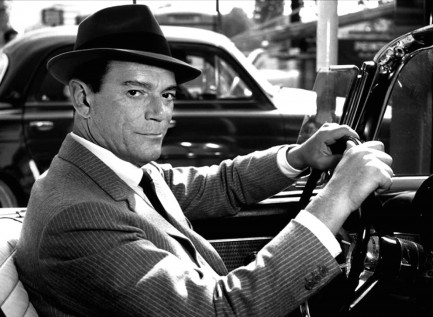 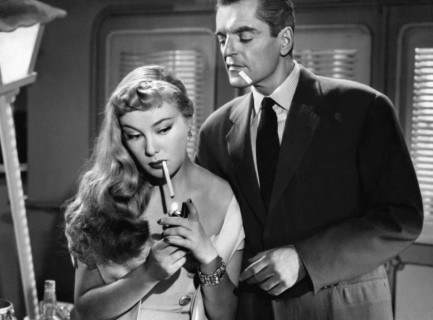 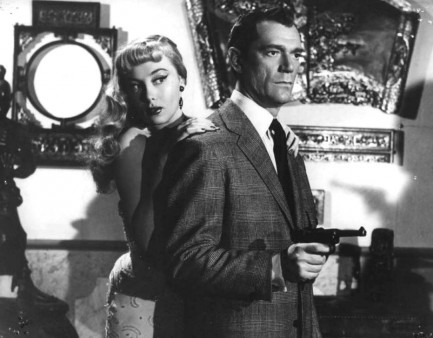 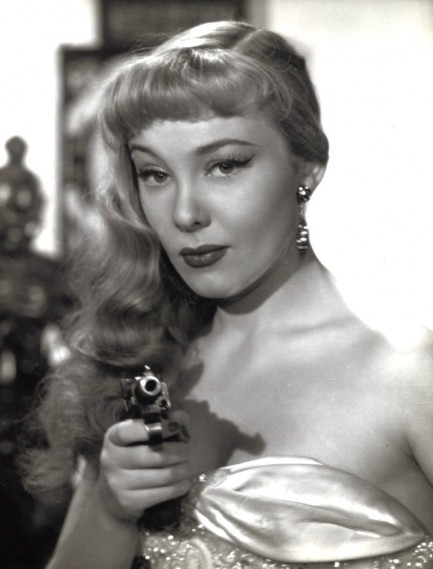 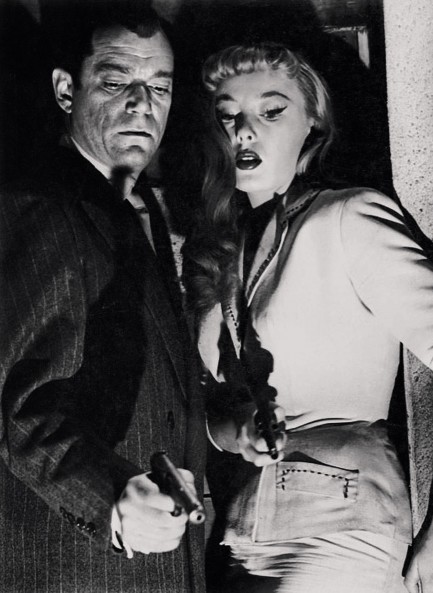 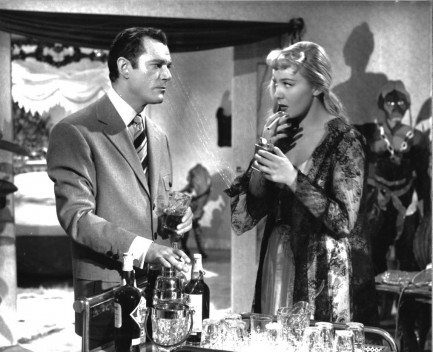 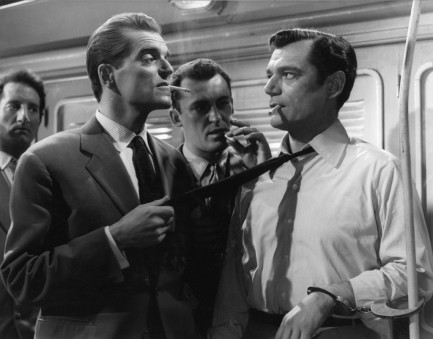 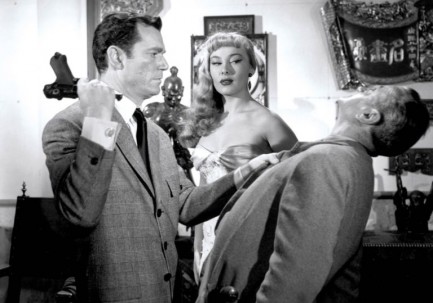 
 Can you keep a secret? I'm way ahead of my time. 
Above is a fantastically beautiful Serge Jacques photo of Belgian actress and model Dominique Wilms that dates from the early 1950s. Wilms appeared in films such as Poison Ivy, Banco à Bangkok pour OSS 117, and Les femmes s'en balancent, aka Dames Don't Care. Looks like Dom don't care either, as this is a very provocative nude for a working actress of the 1950s. Just a glimpse of pubic hair was enough to get photographers and vendors sent to prison, even in France, where Jacques was based. The shot surfaced years after it was made, we suspect, and we should rejoice that it saw the light of day, because daring Dominique is all that and a box of hot tamales.
 I want the cash, the jewelry, and the licensing fees or I'll blow your brains out. 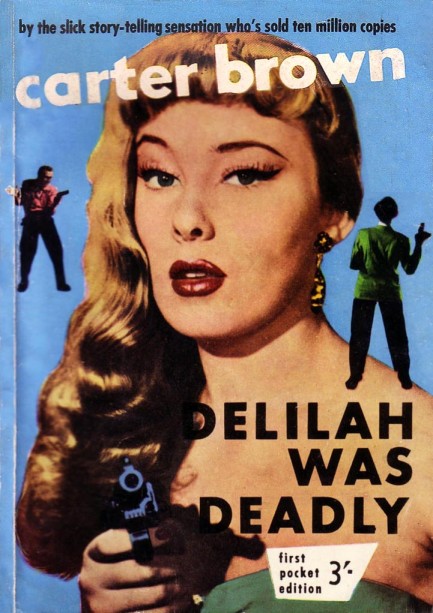 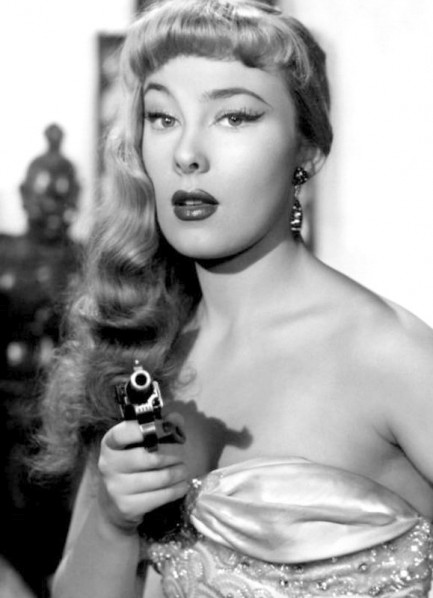
We're back to charting Horwitz Publications' unlicensed usage of celebrity images for its paperback covers. We've already talked about Joan Collins, Senta Berger, Elke Sommer, Lili St. Cyr, and others. This time the company borrows Belgian actress Dominique Wilms. The image chosen was originally used as a promo photo and the basis of the promo poster for her 1953 film debut La môme vert de gris, aka Poison Ivy. We're convinced now that Horwitz, which was based in Australia, did this because copyright agreements were lax or nonexistent regarding image licensing across international borders. And even if some rules were on the books, it's very possible Wilms and her management never saw the above cover, and if they did decided it wasn't worth a legal fight. The Horwitz guys were sneaky bastards. But as we've asked before, why bother? Wilms was so obscure at this point that Horwitz gained nothing from using her face. Don't get us wrong—she has a great face (and everything else too). But Horwitz could have simply used local models and produced identical results. That's the part we'll never get. But we've queried an expert about stolen paperback imagery and we'll share his answer soon. Note: Very soon. See here.
 She came from a reformatory with trouble on her mind. 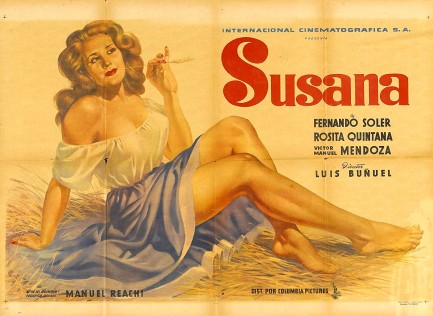
Because of their dimensions and the narrow width of the main column on our website, we don't like to use horizontally oriented posters unless they're the Japanese bo-ekibari style meant to be assembled from two halves. But sometimes there's no choice. This promo was made for the Mexican drama Susana, also known as Susana: Carne y demonio, starring Rosita Quintana. It was helmed by the legendary Spanish director Luis Buñuel, who would go on to make classics like Belle du jour, Cet obscur objet du désir (That Obscure Object of Desire), and Le charme discret de la bourgeoisie (The Discreet Charms of the Bourgeoisie). In this one, he tells the story of the crazed young title character, who's jailed in a reformatory but escapes during a thunderstorm and turns up at the house of an upper class family, drenched and peering in their dining room window. In the lightning and rain, the family thinks at first that Quintana is some sort of apparition or devil, and by the end of the movie they realize they were right. But she isn't a supernatural devil. She's the most natural devil of all—the femme fatale.
After the family rescues her from the rain and offers to let her stay they slowly succumb to the poisons of lust and jealousy, eventually realizing that Susana is not a lost and helpless waif, but a manipulative temptress and cocktease—and crazy besides. Every man in the movie wants her, and she's willing to entertain possibilities with all of them. The scenario presented of the patriarch of a family desiring a highly sexual newcomer in the household is archetypal now, having been used in everything from the Brazilian television series La Presença de Anita to Jaime Pressly’s 1997 so-bad-it’s-good softcore hit Poison Ivy: The New Seduction, but it was fairly new back then, and it's pretty hot stuff—especially when you compare it to what was happening in U.S. cinema at the time. But even though the movie is racy, has a beautiful lead actress, and was directed by Buñuel, we can't give it a full endorsement. It plays a little too much like a Mexican novela or soap opera. But it's fascinating and certainly worth watching. Susana premiered today in 1951.
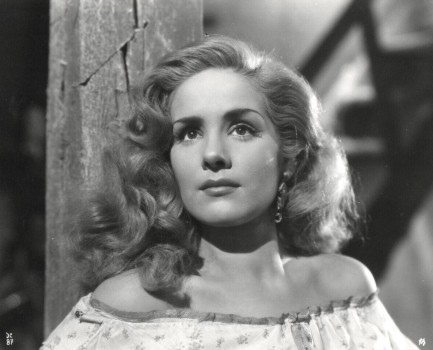 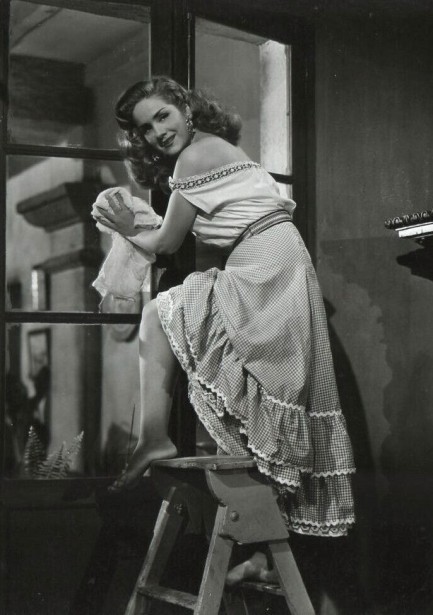 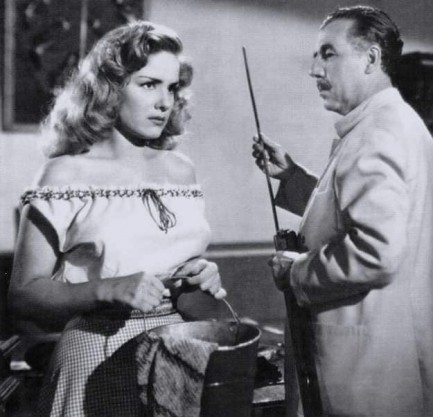  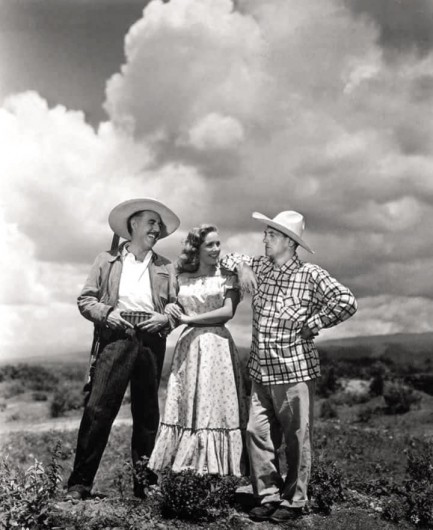 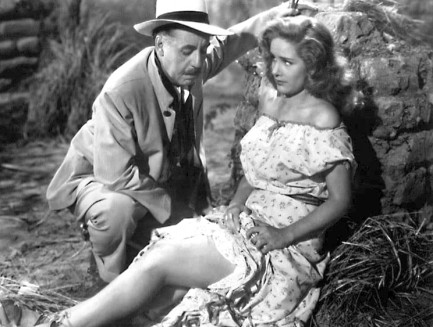 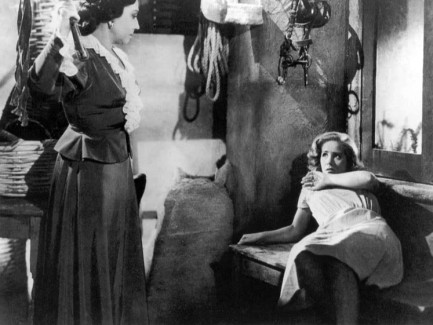 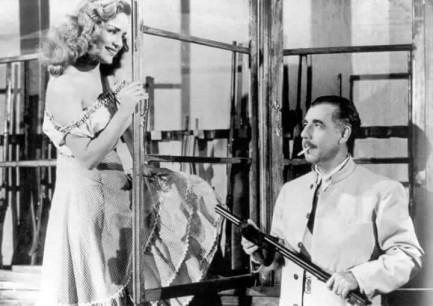 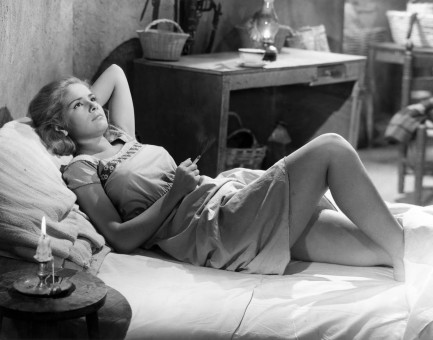
|
 |

The headlines that mattered yesteryear.
1985—Theodore Sturgeon Dies
American science fiction and pulp writer Theodore Sturgeon, who pioneered a technique known as rhythmic prose, in which his text would drop into a standard poetic meter, dies from lung fibrosis, which may have been caused by his smoking, but also might have been caused by his exposure to asbestos during his years as a Merchant Marine. 1945—World War II Ends
At Reims, France, German General Alfred Jodl signs unconditional surrender terms, thus ending Germany's participation in World War II. Jodl is then arrested and transferred to the German POW camp Flensburg, and later he is made to stand before the International Military Tribunal at the Nuremberg Trials. At the conclusion of the trial, Jodl is sentenced to death and hanged as a war criminal. 1954—French Are Defeated at Dien Bien Phu
In Vietnam, the Battle of Dien Bien Phu, which had begun two months earlier, ends in a French defeat. The United States, as per the Mutual Defense Assistance Act, gave material aid to the French, but were only minimally involved in the actual battle. By 1961, however, American troops would begin arriving in droves, and within several years the U.S. would be fully embroiled in war. 1937—The Hindenburg Explodes
In the U.S, at Lakehurst, New Jersey, the German zeppelin LZ 129 Hindenburg catches fire and is incinerated within a minute while attempting to dock in windy conditions after a trans-Atlantic crossing. The disaster, which kills thirty-six people, becomes the subject of spectacular newsreel coverage, photographs, and most famously, Herbert Morrison's recorded radio eyewitness report from the landing field. But for all the witnesses and speculation, the actual cause of the fire remains unknown. |

|
|

It's easy. We have an uploader that makes it a snap. Use it to submit your art, text, header, and subhead. Your post can be funny, serious, or anything in between, as long as it's vintage pulp. You'll get a byline and experience the fleeting pride of free authorship. We'll edit your post for typos, but the rest is up to you. Click here to give us your best shot.

|
|





































































































